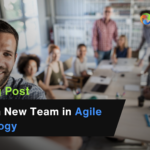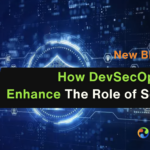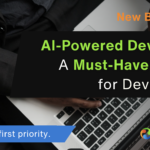
Rapid innovation and new developments in the technological sphere bring in a never-ending cycle of change. Beyond the obvious benefits of new technologies in different industrial sectors, this change has profoundly affected the work of full-stack developers. To succeed in the more contactless workplace in the coming year, they will need to learn and adapt constantly to stay on top of Emerging Full Stack Development Trends.
This highlights the importance of offshore software developers to keep up with the latest innovations and market trends. Having a clear idea of the abilities that will guarantee your future success in your chosen field is crucial. This article will discuss the top predicted trends in new technology for 2024, providing insight into prospective employment scenarios.
Blockchain Technology
Blockchain technology has undergone significant evolution over the past decade. Originally a niche tool in the cryptocurrency industry, it has since emerged as a flexible solution for data storage in business. The diverse blockchain technology offerings make it a promising option for offshore software outsourcing Costa Rican developers.
Due to its potential for securely preserving financial transactions and data, blockchain technology’s popularity will soar in 2024. Blockchain, also known as distributed ledger technology, has proven valuable in numerous fields. For instance, it has been utilized to trace the origin of disease outbreaks and monitor the distribution of consumer goods. By implementing blockchain, businesses can establish a secure environment that safeguards their customers’ data.
Notably, modern blockchain technology relies on decentralization as its backbone. The development of blockchain applications requires the establishment of a decentralized database. The decentralized nature of blockchain makes it a great foundation for building applications from the ground up. The full-stack developers’ focus is turning to blockchain as technology develops rapidly since it allows enterprises to build apps in a decentralized and secure way.
Serverless Architecture
Serverless computing, also known as Function-as-a-Service (FaaS), gives software developers the freedom to focus on creating and deploying their applications without worrying about maintaining their servers. The revolutionary effects of the cloud computing paradigm on the development and distribution of software are without dispute. Its design is event-driven, meaning tasks can be executed in response to requests, and resources can be automatically scaled as needed. The increased scalability and event-driven nature make it easy to design applications and provide them the flexibility to handle spikes in traffic.
Technologies like Internet of Things apps, chatbots, and virtual assistants all make extensive use of serverless computing. There is little question that the adoption of serverless systems indicates a radical change in full-stack development since it has dramatically improved the application development process in speed, flexibility, and cost.
No-Code Development
In 2024, low-code development will play a pivotal part in the evolution of full-stack development practices. Low-code platforms are growing in popularity due to the increasing demand for apps and the number of people using such apps. These platforms are crucial because they help cut down on the overall amount of code, which speeds up the creation of applications and reduces the need for human coding. By 2024, roughly 65% of apps will be built using low-code platforms.
In full-stack development, when rules and processes change often, low-code development is a visual and user-friendly method for software production. Custom software development firms in the United States have found success with low-code development solutions like Budibase and OutSystems. As the software industry adapts to new requirements, these technologies allow faster and more flexible development.
Virtual Reality (VR) and Augmented Reality (AR)
It’s crucial to keep an eye on the emerging field of mixed reality, which includes both augmented and virtual realities. Tools like Apple’s ARKit, Google’s ARCore, and Meta’s services are assisting a growing number of businesses in adopting AR and VR technologies in order to better compete with industry titans.
There are several potential uses for cutting-edge mixed reality technology, such as distant and remote learning, teaching, medical treatment, and gaming. Advancing this game-changing technology will need the engagement of offshore software developers, who are skilled in all aspects of software development, from user interface design to systems software.
IoT (Internet of Things)
The Internet of Things (IoT) is a network that allows all devices to link up, share information, and interact with humans. Internet of Things applications are increasingly used in the manufacturing and mining industries. Full-stack IoT developers with clear and forthright UI/UX, backend, and frontend play a critical role in IoT.
Companies in these markets are natural targets for the creators of cutting-edge products like automated equipment controls, remote trouble locators, and data mining from myriads of field sensors. Because of their versatility, full-stack developers are the most suitable candidates for facilitating the development of IoT solutions. According to a recent survey, 127 more devices are connected to the internet every second. This is why professionals refer to the Internet of Things as the Industrial Revolution 4.0.
Edge Computing
Edge computing is a revolutionary change that responds to the need for lower latency, real-time decision-making, and lower bandwidth usage. While traditional cloud computing concentrates data processing in a few large data centers, edge computing moves that activity to the network’s edges. Edge computing can provide amazing efficiency in making crucial, split-second judgments because of its location at the network’s edge. It ensures that only necessary information is sent to the cloud, saving time and money. Redundancy and dependability are hallmarks of edge computing that bolster its ability to operate independently and maintain service in mission-critical environments.
As time passes, edge computing is being used to reimagine many industries, such as augmented and virtual reality, remote monitoring of vital systems, smart city and infrastructure development, and picture applications driven by artificial intelligence. Edge computing has significantly affected various industries because of the widespread use of apps that utilize features like natural language processing, image recognition, and predictive analytics.
Conclusion
As we move towards 2024, the future of software development appears bright, with numerous opportunities. It is crucial to comprehensively understand the upcoming trends to keep up with the growing demand for innovative technical solutions.
In the coming years, offshore software development is expected to undergo significant technological transformation. Businesses will be oriented towards building their brand with no-code development software or opting for serverless technology for a more seamless experience. Therefore, full-stack developers must stay up-to-date with the latest trends to stay relevant in the industry. Seeking offshore software outsourcing in Costa Rica? Visit our website or contact us at +1 760 884-3886 to get started.





